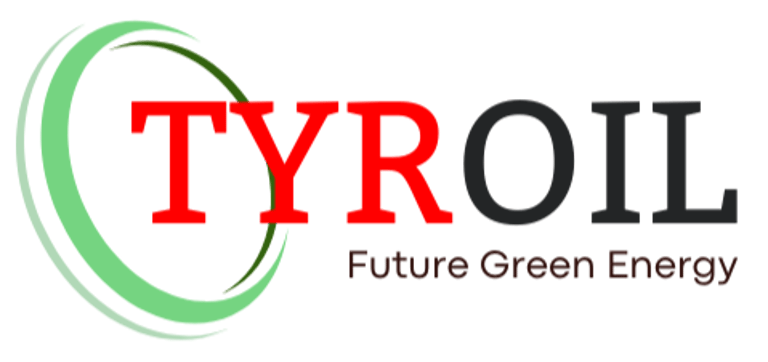The Future is Circular: Policy, Innovation, and the Evolution of the TPO Business
THE STORIES
TYROIL
7/12/20255 min read


Imagine a world where waste is not an end, but a beginning. A world where every discarded item is seen as a valuable resource, ready to be transformed and reintroduced into the economy. This is the promise of the circular economy, and at its heart lies the transformative power of technologies like Tire Pyrolysis Oil (TPO). The TPO business, far from being a static industry, is a dynamic and evolving sector, constantly shaped by progressive policies, groundbreaking innovations, and collaborative efforts. This article looks ahead, exploring the exciting future of TPO and its pivotal role in building a truly circular and sustainable global economy.
The Guiding Hand: Evolving Policy Landscape
Policies are the invisible architects of our economic and environmental landscapes. For the TPO industry, evolving policy frameworks are not just regulations; they are powerful catalysts for growth and adoption. Governments worldwide are increasingly recognizing the environmental and economic benefits of diverting waste from landfills and embracing resource recovery. This recognition translates into:
Stricter Waste Regulations: Bans on landfilling tires, increased landfill taxes, and mandates for tire recycling create a strong incentive for industries to adopt solutions like pyrolysis. These policies ensure a consistent and growing feedstock supply for TPO producers [1].
Renewable Energy Mandates: As nations strive to meet climate targets, policies promoting renewable energy sources and alternative fuels open doors for TPO as a sustainable energy option. Incentives for using bio-based or recycled fuels further boost TPO demand.
Carbon Pricing Mechanisms: The implementation of carbon taxes or cap-and-trade systems makes environmentally friendly processes like TPO more economically attractive by penalizing carbon-intensive alternatives. TPO producers can also benefit from carbon credits generated by reducing greenhouse gas emissions.
Extended Producer Responsibility (EPR): EPR schemes, where tire manufacturers are held responsible for the end-of-life management of their products, drive investment into recycling and recovery technologies, including pyrolysis, ensuring a sustainable funding mechanism for the industry.
These policies create a fertile ground for the TPO business to flourish, transforming it from a niche solution into a mainstream component of waste management and energy strategies.
The Engine of Progress: Technological Advancements
Innovation is the lifeblood of any industry, and the TPO sector is no exception. Continuous technological advancements are enhancing the efficiency, scalability, and product quality of pyrolysis processes, unlocking new possibilities:
Catalytic Pyrolysis: The use of catalysts is improving TPO quality, making it more suitable for direct use as fuel or for further refining into valuable chemicals like aromatics and olefins. This opens up higher-value markets beyond basic industrial fuel [2].
Improved Reactor Designs: New reactor designs are leading to more efficient heat transfer, better control over reaction conditions, and higher yields of desired products. This means more TPO and rCB from the same amount of waste tires.
Integration with Other Waste Streams: Researchers are exploring the co-pyrolysis of tires with other waste materials (e.g., plastics, biomass) to create synergistic effects, optimize product yields, and address multiple waste challenges simultaneously.
Advanced Product Refining: Innovations in post-processing and refining technologies are enabling the production of highly purified TPO and specialized grades of recovered carbon black (rCB) that can directly replace virgin materials in demanding applications, further enhancing their market value.
Automation and AI: The integration of automation and artificial intelligence in plant operations is leading to increased efficiency, reduced labor costs, and improved process control, making TPO production more competitive and reliable.
These advancements are not just incremental improvements; they are transformative shifts that are making TPO production more economically viable and environmentally impactful.
New Horizons: Emerging Market Opportunities
As technology evolves and policies mature, new market opportunities are constantly emerging for TPO and rCB:
Specialized Chemicals: TPO is increasingly being recognized as a valuable source of specialty chemicals, opening doors to the chemical industry for applications in polymers, resins, and other high-value products.
Advanced Materials: Recovered carbon black, with its unique properties, is finding applications in advanced materials, including conductive composites, battery electrodes, and even as a pigment in high-performance coatings.
Decentralized Energy Solutions: Smaller, modular TPO plants can provide localized energy solutions for remote communities or industrial parks, contributing to energy independence and resilience.
Sustainable Infrastructure: TPO and rCB can be incorporated into sustainable infrastructure projects, such as eco-friendly asphalt mixes or recycled rubber products for construction, creating a closed-loop system.
These new opportunities expand the market reach of TPO products, further solidifying the industry's position in the circular economy.
The Power of Togetherness: Collaboration and Partnerships
The future of the TPO business is inherently collaborative. No single entity can solve the complex challenges of waste management and energy transition alone. Strong partnerships between:
Industry and Academia: Collaboration with universities and research institutions drives innovation, leading to new technologies and applications.
TPO Producers and End-Users: Direct partnerships ensure product quality meets market demands and facilitate the integration of TPO products into existing supply chains
.Government and Private Sector: Public-private partnerships can accelerate infrastructure development, provide necessary regulatory support, and de-risk investments.
Waste Management Companies and TPO Plants: Seamless integration ensures a consistent feedstock supply and efficient waste diversion.
These collaborations foster a supportive ecosystem that accelerates growth, overcomes challenges, and maximizes the collective impact of the TPO industry.
A Glimpse into the Future: The Circular City of Tomorrow
Imagine the city of Neo-Green, circa 2040. Its energy grid is powered not just by solar and wind, but also by decentralized TPO plants, converting the city's discarded tires into clean fuel. The roads are paved with asphalt modified with recovered carbon black, making them more durable and sustainable. The new generation of electric vehicles uses tires manufactured with a significant percentage of rCB, closing the loop on tire production. Local industries thrive on the steady supply of TPO as a cost-effective and environmentally friendly fuel source.
This isn't a distant dream; it's the logical evolution of the TPO business, driven by foresight, innovation, and a collective commitment to circularity. The citizens of Neo-Green breathe cleaner air, enjoy a robust local economy, and live in a city that truly embodies the principles of sustainability.
Conclusion: TPO – A Cornerstone of the Circular Economy
The Tire Pyrolysis Oil business stands at the forefront of the transition to a circular economy. Driven by an evolving policy landscape, fueled by relentless innovation, and strengthened by strategic collaborations, it is poised for significant growth and impact. TPO is not just about managing waste; it's about creating value, fostering energy independence, and building a more resilient and sustainable future.
For businesses, investors, and policymakers alike, understanding and embracing the potential of TPO is no longer an option but a necessity. It is a cornerstone of the circular economy, transforming a global problem into a powerful solution, one tire at a time.
More Related Articles:
The Diplomatic Fuel: How TPO Can Foster International Cooperation (Beyond Conflict)
The Global Mosaic: How Different Regions Tackle Waste Tires with Pyrolysis
The Circular Story Unfolds: Tire Pyrolysis as a Blueprint for ESG Success
The Ethical Compass: Governance and Transparency in Sustainable Tire Recycling
References
[1] Significance of pyrolysis in the circular economy: An integrative review. ScienceDirect. [https://www.sciencedirect.com/science/article/pii/S0016236125012645]
[2] A review on waste tires pyrolysis for energy and material recovery from the optimization perspective. ResearchGate. [https://www.researchgate.net/publication/381869315_A_review_on_waste_tires_pyrolysis_for_energy_and_material_recovery_from_the_optimization_perspective]
[3] Global trends of waste tire pyrolysis research: a bibliometric analysis. ScienceDirect. [https://www.sciencedirect.com/science/article/pii/S2772783125000135]
[4] Enhancing Circular Economy and Sustainable Environmental Practices—Opportunities and Challenges for Tyre Pyrolysis in Africa. ResearchGate. [https://www.researchgate.net/publication/372733919_Enhancing_Circular_Economy_and_Sustainable_Environmental_Practices-Opportunities_and_Challenges_for_Tyre_Pyrolysis_in_Africa]
[5] Waste management and green technology: future trends in circular economy. Springer. [https://link.springer.com/article/10.1007/s11356-022-23238-8]
